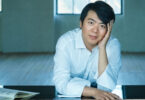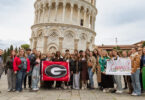Athens, Ga. – John C. Mather, senior astrophysicist at NASA’s Goddard Space Flight Center in Greenbelt, Maryland, and winner of the 2006 Nobel Prize, will present a special lecture in memory of M.M. “Dunc” Duncan on April 7 at 3:30 p.m. in Room 202 of the University of Georgia’s physics building. The event is free and open to the public.
Duncan was a professor emeritus in the department of physics and astronomy.
Mather’s lecture, “The history of the universe from the beginning to the end: Where did we come from, where can we go?,” will outline the history of the universe from its earliest moments in the Big Bang to its possible end.
“We are both excited and honored by Dr. Mather’s visit to UGA; this will be an outstanding and inspiring event for both students and faculty alike,” said Bill Dennis, professor and head of the department of physics and astronomy. “The topic of Dr. Mather’s lecture makes it a particularly fitting memorial to Dunc, since he was an active amateur astronomer who had an intense and enduring interest in all aspects of astronomy and astrophysics.”
As a National Research Council postdoctoral fellow at the Goddard Institute for Space Studies, Mather led proposal efforts for the Cosmic Background Explorer, or COBE, and later served at the Goddard Center Space Flight Center as the principal investigator for the Far IR Absolute Spectrophotometer on COBE. He and his team showed the cosmic microwave background radiation has a blackbody spectrum within 50 parts per million, confirming the Big Bang theory to extraordinary accuracy.
The COBE team also discovered the cosmic anisotropy—hot and cold spots in the background radiation—now believed to be the primordial seeds that led to the structure of the universe today. It was these findings that led to Mather receiving the Nobel Prize in 2006.
Duncan was a faculty member in the department of physics and astronomy from 1961 to 1994, serving as department head from 1968 to 1975. He held an international reputation in the fields of both nuclear and electron and atomic physics. After retiring in 1994 and becoming a professor emeritus, he continued to come to the department every day to work with his colleagues and made sure that he attended every colloquium.






